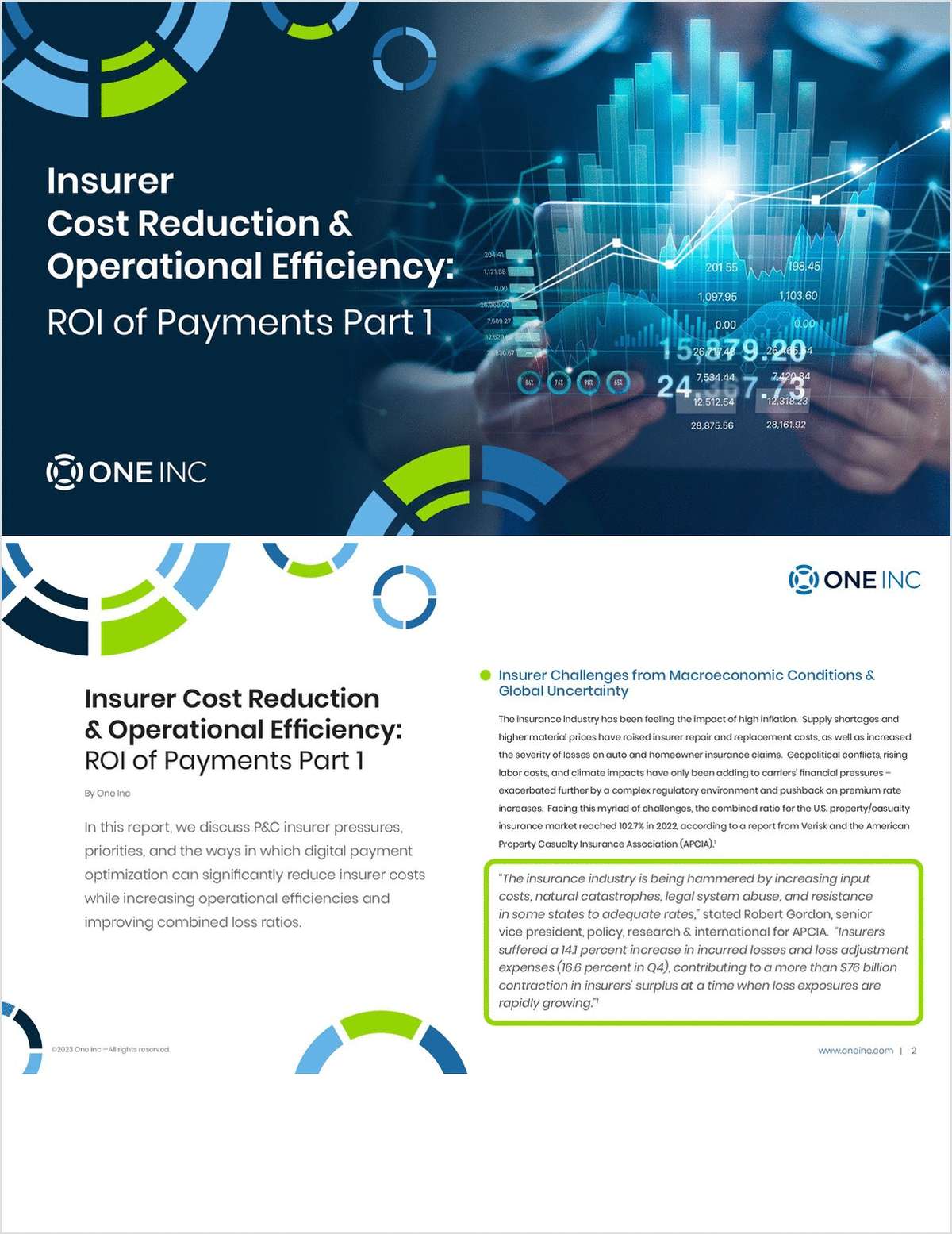Property-casualty companies that reject traditional business models in favor of the creative use of data mining and client segmentation will have an advantage in the coming years, according to a report published yesterday.
Innovative sales delivery and customer retention programs will also play a critical role in the new era, according to the study published by Mercer Oliver Wyman, the New York-based financial services consulting firm.
From 1985 through 2004, the p-c industry had a cumulative underwriting loss of $402 billion, and the return on surplus over the period underperformed the cost of equity by nearly 40 percent.
Steve Kauderer, director and head of the North American Insurance Practice, said that most companies have failed to capitalize on their data gathering and analysis processes. "They have not recognized how much can be learned from a more granular examination of what is often basic or standard data," he said.
The report cites one example of a leading auto insurer that uses what it terms appropriate demographic and psychographic attributes to capture better risks and avoid difficult ones.
A property insurer was cited for examining seemingly irrelevant data on the homeowner's family such as the insured's occupation, creditworthiness and even the age of the family dog.
"The key is to take informed risks," Mr. Kauderer said. "Successful firms recognize that in many areas there are discontinuities and disjunctions between the past and the future. Winning carriers are willing to take these risks and experiment on a regular basis with new variables and revised pricing."
The report said that in recent years some companies have become even more refined in their segmentation, finding distinctions in the level of risk presented by a multitude of driving record considerations such as incident type, incident-conviction date, total number of incidents and total demerit points.
One company has created six price points with the same set of facts, while another has only one price point.
It all comes down to changing industry-think, in the report's view.
"The importance of these demographic distinctions would not be news to a credit analyst at a bank, an advertising manager at a consumer goods company or a police officer," the report said. "But it is only now filtering through to the process of underwriting and pricing of p-c coverage."
Want to continue reading?
Become a Free PropertyCasualty360 Digital Reader
Your access to unlimited PropertyCasualty360 content isn’t changing.
Once you are an ALM digital member, you’ll receive:
- Breaking insurance news and analysis, on-site and via our newsletters and custom alerts
- Weekly Insurance Speak podcast featuring exclusive interviews with industry leaders
- Educational webcasts, white papers, and ebooks from industry thought leaders
- Critical converage of the employee benefits and financial advisory markets on our other ALM sites, BenefitsPRO and ThinkAdvisor
Already have an account? Sign In Now
© 2024 ALM Global, LLC, All Rights Reserved. Request academic re-use from www.copyright.com. All other uses, submit a request to [email protected]. For more information visit Asset & Logo Licensing.








